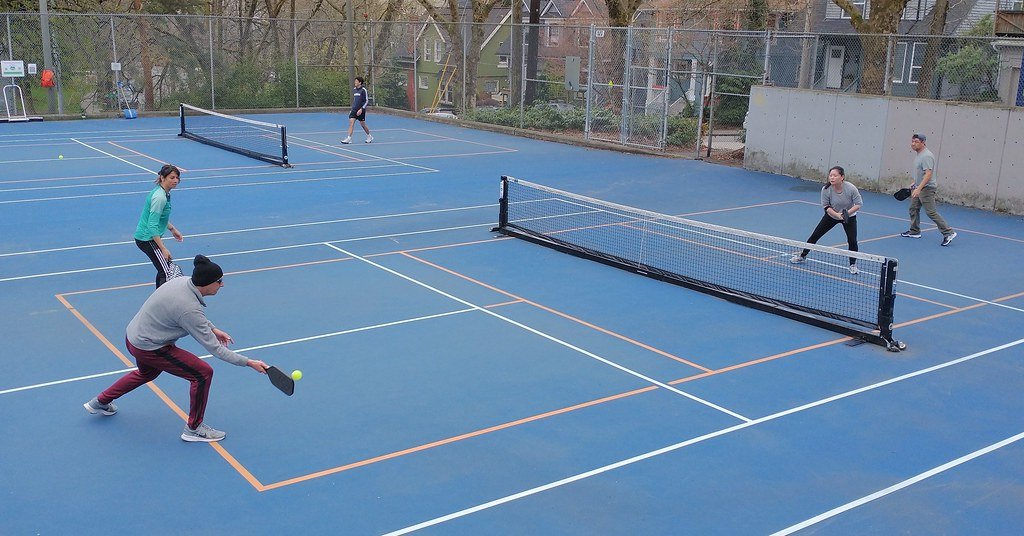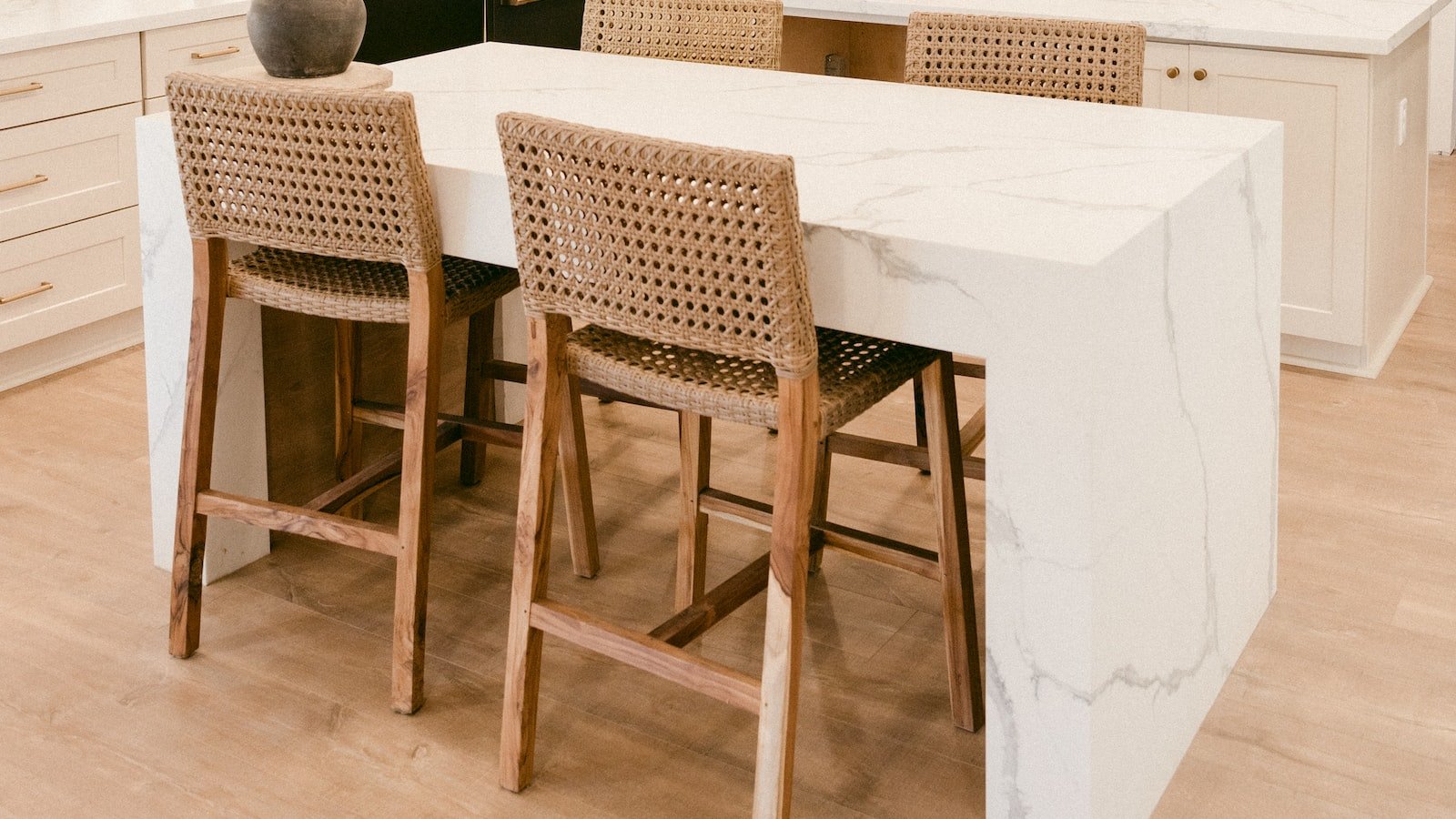Step onto the court, paddle in hand, and get ready to embark on a pickleball adventure like no other. In the realm of this beloved sport, lies a small yet powerful territory known as the “pickleball kitchen.” Often shrouded in mystery, this compact region holds the key to mastering the game - a concept so unique it grasps the attention of newcomers and seasoned players alike. Enveloped in strategy, subtlety, and precision, the pickleball kitchen serves as a fundamental battleground, where the art of finesse is celebrated, and its masters reign supreme. No chefs allowed, for here, the game is cooked with a special recipe of skills, patience, and strategic maneuvering. So, let’s delve deep into the realm of the pickleball kitchen and unravel its secrets, one lob at a time.
Table of Contents
- The Strategy of the Pickleball Kitchen
- Mastering the Non-Volley Zone (NVZ)
- Effective Shots to Utilize in the Kitchen
- Tips for Developing Superior Kitchen Skills
- Understanding the Art of Dinking in Pickleball
- Q&A
- Concluding Remarks

The Strategy of the Pickleball Kitchen
Within the fast-paced world of pickleball, the “kitchen” holds a strategic significance that players must understand to excel in their game. The kitchen, also known as the non-volley zone, is a highlighted area on either side of the net where players are restricted from hitting the ball mid-air. While this may initially seem like a limitation, it opens up a realm of strategic possibilities.
The key to mastering the pickleball kitchen lies in positioning and precision. Skilled players utilize this strategic zone to control the pace and direction of the game. By strategically moving close to the net, players gain a powerful vantage point to anticipate their opponents’ shots and react swiftly.
Here are a few vital tactics to dominate the pickleball kitchen:
- Master the dink shot: The gentle dink shot is a crucial technique that keeps the ball low and near the net, forcing your opponents into a defensive position. The precision required for this shot allows you to control the game’s tempo and open opportunities for powerful offensive strikes.
- Footwork finesse: Agility is key to taking control of the pickleball kitchen. Rapid footwork allows you to swiftly move around the non-volley zone, positioning yourself for optimal shot selection and effective coverage of the court.
- Strategic lob: When your opponents are dominating the pickleball kitchen, a well-executed lob becomes your secret weapon. A perfectly timed lob, soaring high over the net, forces your opponents to retreat, breaking their offensive rhythm and giving you a chance to regain control of the game.
Mastering requires practice, precision, and a deep understanding of the game. By acing the dink shot, refining your footwork, and strategically employing lobs, you can unlock the true potential of this critical zone, gaining a significant edge over your opponents.

Mastering the Non-Volley Zone (NVZ)
When it comes to pickleball, one of the most crucial areas of the court is the Non-Volley Zone, commonly known as the NVZ or the kitchen. The NVZ is a designated area on each side of the court that extends 7 feet from the net. This zone plays a vital role in dictating the pace and strategy of the game, making it essential for players to master their skills within this confined area.
Tips for Dominating the NVZ:
- Footwork: Pay close attention to your footwork within the NVZ. Quick, small steps help you maintain balance and maneuverability, allowing you to react swiftly to opponents’ shots.
- Soft Touch: Utilize soft paddle control to gently place the ball over the net when volleying. This finesse technique helps maintain precision and increases the likelihood of successfully executing shots.
- Dinking: Master the art of dinking, which involves hitting short, gentle shots over the net. This strategic approach prevents opponents from launching powerful drives, giving you a better chance to regain control of the rally.
- Patience: Be patient in the NVZ and avoid attempting risky shots. Remember, the longer you can keep the ball in play, the greater the chances of your opponents making an error or providing you with an opportunity to seize control of the point.
Developing expertise in the Non-Volley Zone can drastically enhance your pickleball game. By consistently practicing the necessary footwork, perfecting your soft touch, and implementing strategic shots like dinks, you’ll become a formidable force at the net. Remember, mastering the NVZ requires time, effort, and a willingness to adapt your game to this critical area of the court.

Effective Shots to Utilize in the Kitchen
Prepare to take your culinary skills to the next level with these incredible shots that will revolutionize the way you cook in the kitchen. These techniques are not only efficient but also add that extra touch of finesse to your dishes. So, let’s dive into some of the most effective shots to utilize!
- The Sauté Sizzle: This shot involves tossing ingredients in a hot pan with a delightful sizzle sound. It adds a burst of flavor to vegetables, meats, and even pasta. The key is high heat and quick movement to achieve that perfect caramelization and mouthwatering aroma.
- The Whisk Whip: Time to unleash your inner chef with the whisk whip. This shot involves vigorously mixing ingredients using a whisk in a circular motion. It’s perfect for creating airy whipped cream, fluffy egg whites, and smooth dressings. The faster the whip, the better the outcome!
- The Grill Griddle: When it’s time to channel your inner grill master, the grill griddle shot is your go-to technique. Heat up your griddle or grill pan, and with precision, sear your favorite meats, vegetables, or even fruits to achieve those gorgeous grill marks. It elevates the appearance and taste of grilled dishes, making them a feast for both the eyes and the palate.
Incorporating these effective shots into your culinary repertoire will not only enhance your skills but also bring a new level of excitement and satisfaction to your time in the kitchen. So, put on your chef’s hat, embrace the thrill of these techniques, and get ready to impress everyone with your delicious creations!
Tips for Developing Superior Kitchen Skills
Becoming proficient in the kitchen is a journey that requires practice, patience, and a genuine passion for cooking. Whether you’re a novice or an experienced home cook looking to elevate your skills, here are some valuable tips to help you develop superior kitchen skills:
- Experiment with Different Ingredients: Don’t hesitate to explore new ingredients and experiment with unique flavor combinations. Embrace diversity in your pantry, and let your taste buds guide you towards creating exquisite culinary masterpieces.
- Master Basic Knife Techniques: A well-equipped kitchen is never complete without a sharp knife. Take the time to learn essential knife skills, such as chopping, mincing, and slicing. Remember, a confident grip and proper technique can significantly enhance both your efficiency and safety in the kitchen.
- Embrace the Fundamentals: While it’s exciting to delve into complex recipes, it’s crucial to build a strong foundation of culinary fundamentals. From mastering essential cooking techniques like sautéing and braising to understanding the importance of proper seasoning, honing these basic skills will lay the groundwork for your kitchen success.
- Keep a Well-Organized Kitchen: A cluttered kitchen can hinder your efficiency and creativity. Take the time to organize your workspace, keep your utensils and ingredients easily accessible, and maintain a clean and tidy environment. A well-organized kitchen will not only save you time but also make your culinary adventures more enjoyable.
- Continual Learning: The world of cooking is vast and ever-evolving. Never stop learning and stay curious. Seek inspiration through cookbooks, online resources, and cooking classes. Attend workshops, experiment with different cuisines, and challenge yourself to expand your culinary repertoire. The more you learn, the more your kitchen skills will flourish.
By following these tips and embracing the joy of cooking, you’ll develop superior kitchen skills that will enable you to create delicious and memorable meals for yourself, your family, and your friends. Happy cooking!
Understanding the Art of Dinking in Pickleball
In the world of pickleball, one skill stands out as both elegant and deceptive – the art of dinking. Dinking, sometimes referred to as the “soft game,” involves using finesse and touch to outsmart your opponents. It is a technique that requires precision, control, and a deep understanding of the game.
The essence of dinking lies in the ability to delicately place the ball over the net, just barely clearing it, and landing it softly in your opponent’s side of the court. It is a strategy that primarily focuses on maintaining control, rather than power. By employing a gentle touch, you force your opponents to make difficult shots, stretching their limits and increasing the likelihood of errors.
Mastering the art of dinking involves several fundamental elements that can elevate your game to the next level. Here are some key aspects to consider:
- Angle of the paddle: Positioning your paddle at the correct angle is crucial to execute the perfect dink. Tilting the paddle face slightly upward will enable you to generate upward trajectory, keeping the ball low and close to the net.
- Soft hands: Developing soft hands is essential for successful dinking. By loosening your grip and relaxing your muscles, you gain greater control over the ball, allowing for deft placement and subtle changes in direction.
- Timing and patience: Dinking is a strategic game that requires timing and patience. Waiting for the right moment to execute a dink can catch your opponents off guard, disrupting their rhythm and opening up opportunities for you.
- Body positioning: Proper body positioning plays a vital role in executing precise dinks. Stepping close to the net, with knees slightly bent, helps in improving reach and maneuverability.
The art of dinking is not merely about subtlety and finesse, but also about understanding your opponents’ weaknesses and adapting your strategy. By mastering this skill, you gain a powerful weapon in your pickleball arsenal, creating an aura of unpredictability that can give you the edge in every game.
Q&A
## **Q: What is the pickleball kitchen?**
**A:** The pickleball kitchen, also known as the “no-volley zone,” is the area located within 7 feet from the net on both sides of the court. It serves as a neutral territory where players are prohibited from hitting volley shots directly from the air.
## **Q: Why is it called the pickleball kitchen?**
**A:** The term “pickleball kitchen” is a playful reference to the kitchen in other racket sports like tennis and badminton, where players are similarly limited in their shot selection near the net.
## **Q: What are the rules regarding the kitchen in pickleball?**
**A:** The rules are clear - players cannot enter the no-volley zone, except when the ball has bounced outside of it. They may hit volleys or smashes only after the ball has landed outside the kitchen boundaries.
## **Q: Can a player hit the ball from the kitchen back into play?**
**A:** Yes, as long as the ball has bounced outside the kitchen boundaries, players can return a shot from within the kitchen. Players need to be meticulous in their footwork and timing to prevent foot faults during these shots.
## **Q: Why is it important to understand the kitchen rules in pickleball?**
**A:** Understanding the kitchen rules is essential since any violation would result in a loss of point or a side-out. Properly adhering to these rules ensures fair play and prevents players from gaining an unfair advantage near the net.
## **Q: What happens if a player steps into the kitchen while volleying the ball?**
**A:** Any contact with the kitchen surface, even a slight touch, results in a fault. If a player steps into the kitchen while volleying the ball, the point is awarded to the opposing team, causing a side-out.
## **Q: Are there any exceptions to the kitchen rules?**
**A:** Yes, there are exceptions known as “third-shot drops” or “kitchen drops” where players intentionally hit a soft, low shot from the kitchen to start the point. These shots are allowed if executed correctly and must land within the opponent’s kitchen area.
## **Q: Can a player hit a ball that bounces in the kitchen?**
**A:** No, hitting a ball while it is still bouncing within the kitchen is forbidden. Players must wait for the ball to leave the kitchen before attempting to return it.
## **Q: Can a player reach over the kitchen to hit a ball?**
**A:** Absolutely! Players are allowed to lean over the kitchen with their paddle to hit a ball as long as they do not step into or touch the kitchen with any part of their body or paddle.
## **Q: Are there any strategies associated with the pickleball kitchen?**
**A:** Yes, players often engage in strategic placement of shots to force their opponents into the kitchen, granting them an opportunity to gain control of the point and potentially win it using kitchen drop shots or other tactics.
Concluding Remarks
As we venture out of the pickleball kitchen, we are armed with a newfound understanding of this enigmatic court area. No more shall we fear getting caught in the culinary chaos that unfolds within its boundaries. With this knowledge, we are now equipped to conquer the pickleball battlefield with finesse and tactical astuteness.
Remember, the kitchen is not just a symbolic reminder of cooking utensils and mouthwatering ingredients. It serves a greater purpose, tempting us to make hasty decisions and forcing us to be nimble on our feet. But fear not, for with practice and determination, we can master the art of dancing around this forbidden zone.
To fully grasp the essence of the kitchen, it is crucial to appreciate its intricacies. It is a realm where strategic shots reign supreme and patience is a virtue. An understanding of strategic positioning, swift movements, and a keen eye for the perfect moment will elevate our game to new heights.
No longer shall we permit the kitchen to intimidate us, for we comprehend its purpose. We now realize that entering too soon invites trouble, obstructing our opponents’ path and jeopardizing our chances of victory. Instead, we shall tactfully wait, ready for the opportune moment to pounce on the precise pickleball delicacies that come our way.
In this culinary dance, we have discovered that the kitchen is a sanctuary of control, requiring us to wield power over our shots and finesse in our maneuvering. It is a place where battles are won and lost, a sacred ground where patience and resilience are rewarded.
So, as we depart the pickleball kitchen, let us embrace the lessons we have learned. Armed with a newfound understanding of this hallowed ground, we step forward, confident in our ability to navigate the court with grace and precision. Remember, no chefs are allowed in this kitchen; only pickleball warriors with a hunger for victory.
As an affiliate, my content may feature links to products I personally use and recommend. By taking action, like subscribing or making a purchase, you’ll be supporting my work and fueling my taco cravings at the same time. Win-win, right?
Want to read more? Check out our Affiliate Disclosure page.




